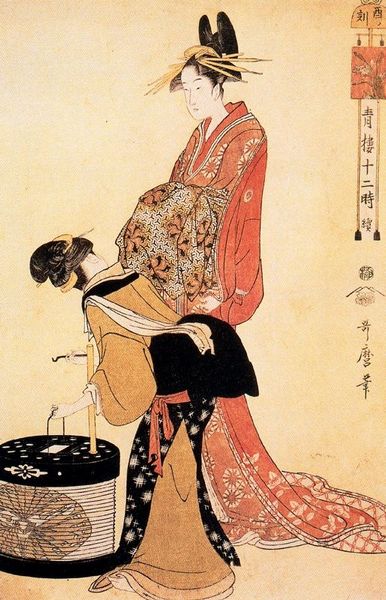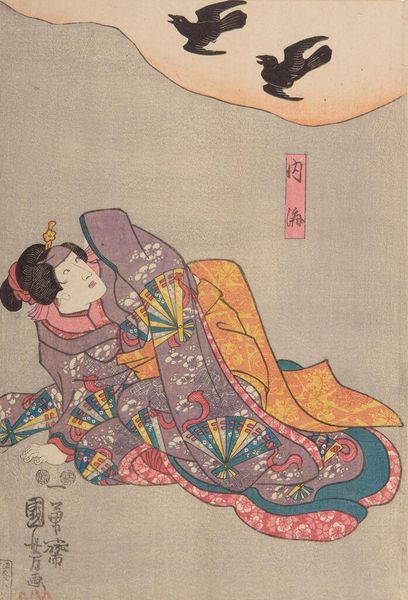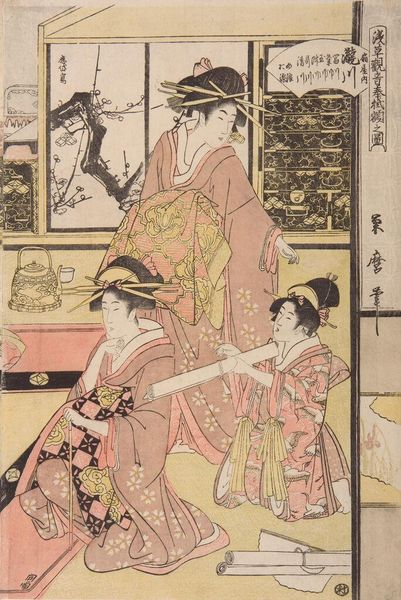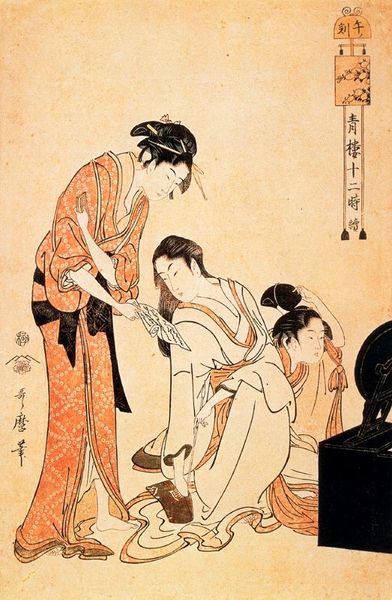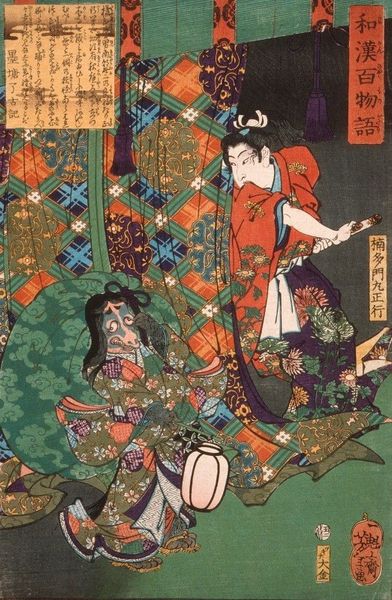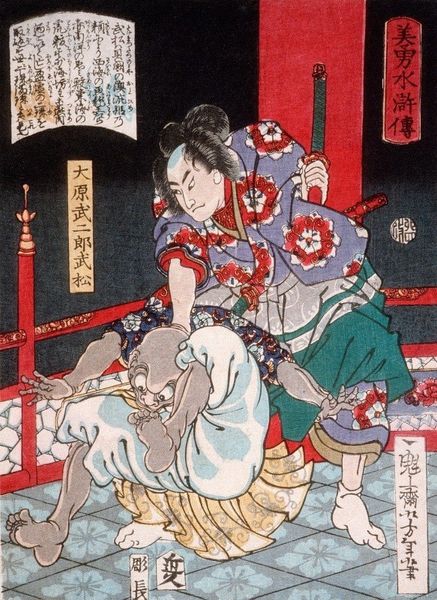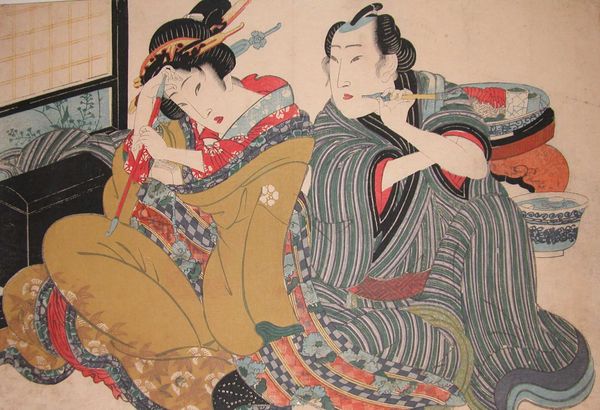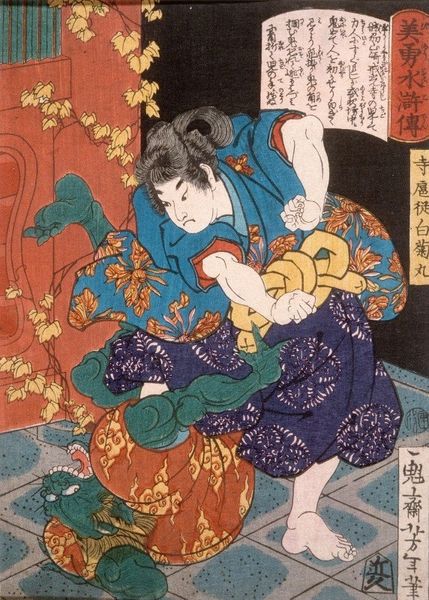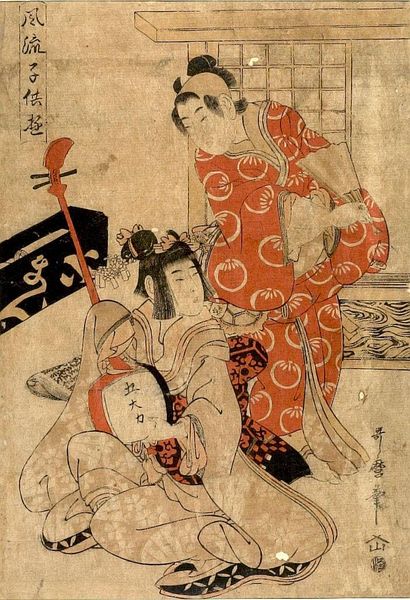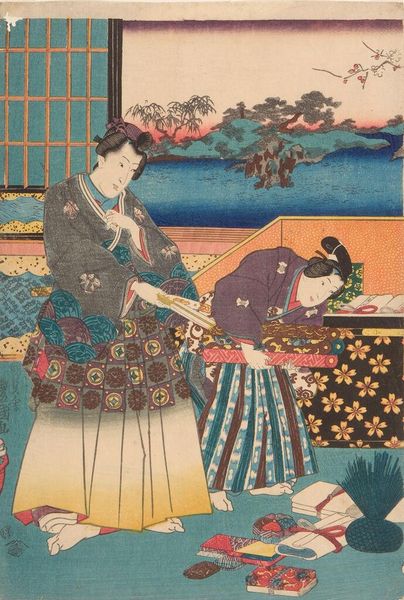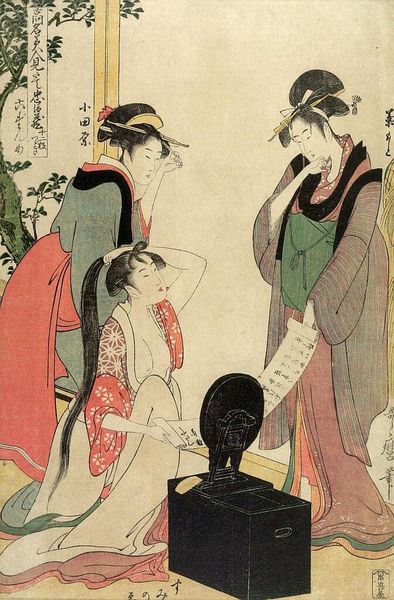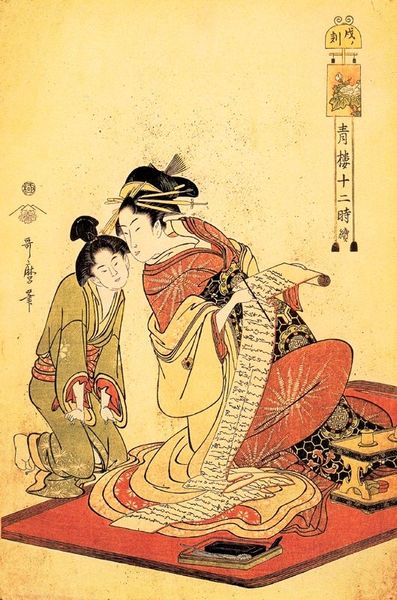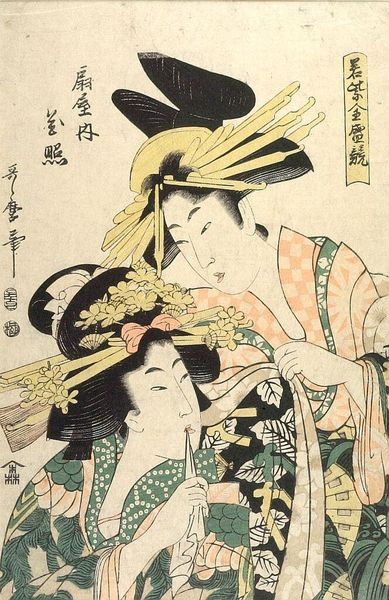
print, ink, woodblock-print
#
portrait
#
ink painting
# print
#
asian-art
#
ukiyo-e
#
figuration
#
ink
#
woodblock-print
#
erotic-art
Copyright: Public domain
Curator: This Ukiyo-e print, whose creator is thought to be Kitagawa Utamaro, invites us into a private world. I must say that its title, if my interpretation holds true, strikes me as fairly evocative: "The Hour of the Dragon." Editor: The light, almost ethereal palette definitely clashes with the intimate scene. It feels both vulnerable and exposed somehow. Is it a bedroom? Or a stage? The pale background just refuses to tell. Curator: Ukiyo-e, "pictures of the floating world," often celebrated beauty and fleeting pleasure. What unfolds here uses erotic art to show intimacy as performance—we, the viewer, become voyeurs, gazing at two figures from the Yoshiwara district—with one being attended to, in what appears to be a very specific moment of ministation. Editor: This attending...is that a form of care, control, or perhaps a more intricate dance of desire? Look at how deliberately the patterns of their kimono are rendered – spirals meeting geometric floral outbursts. What do they tell us? Curator: It's not merely about depicting physical intimacy. The floating world’s reflections provide an ephemeral mirror, a transient refuge. It underscores fleeting existence, but, I suspect, reveals the woman attending with compassion as well as dutiful habit. Editor: The detail is compelling. Like, notice the fallen hair ornaments and what seems to be an abandoned sake cup! Each symbol whispers its own secrets about social and sexual interactions in 18th-century Edo. I imagine these prints as gossip conduits, stories circulated among connoisseurs. Curator: Exactly, dear friend! Each viewing unlocks layers, reveals shifting interpretations. In fact, you can observe visual and allegorical cues around feminine virtues—the "hour of the dragon" refers to the fifth sign of the Chinese Zodiac and aligns to themes of fate, energy, luck and even royalty. Utamaro presents it all in delicate visual shorthand. Editor: What strikes me most is how Utamaro handles intimacy. It's a potent dance between revelation and concealment—between surface pattern and emotional interiority. You know, sometimes art unveils the familiar—so that it appears freshly strange. I believe Utamaro succeeded wonderfully here. Curator: A final reflection for me revolves around visual textures: what is printed upon the paper versus the interior experience held and known solely between the women? Indeed, much is left unspoken—yet powerfully felt.
Comments
No comments
Be the first to comment and join the conversation on the ultimate creative platform.
